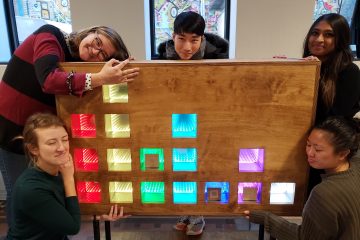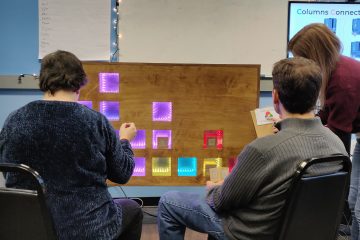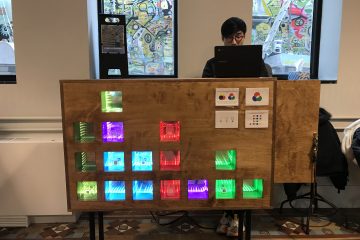Week 12
Early Monday morning, we transported our baby to the MuseumLab for two weeks of playtesting and QA. We strapped her in real tight to the back of Emily’s husband’s truck and made it all there in one piece (thank you Chris)!
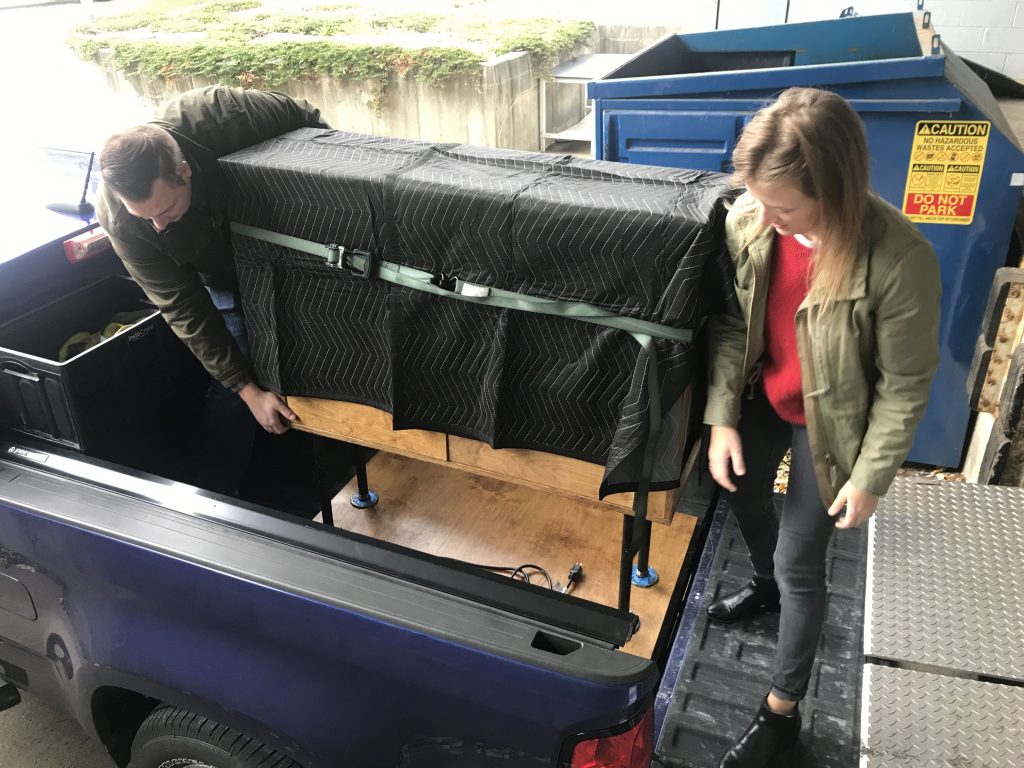
We placed our installation in the Tech Lab, where Pupil used to be demoed (Pupil is former ETC project that explored AR interactions in the future classroom). We also placed two stools in front of the installation since we noticed during ETC Playtest Day that children would squat in front of the installation. This would hopefully prolong the comfort and stay of guests interacting. As a reminder, we had decided on this size because it met ADA requirements and we tested this with a wheelchair (thanks Joyride!).

We booked access to the conference room next to TechLab to observe how guests interact in the space. We spent all open hours on Monday, Wednesday, Friday, and Saturday observing guests in the Tech Lab space.
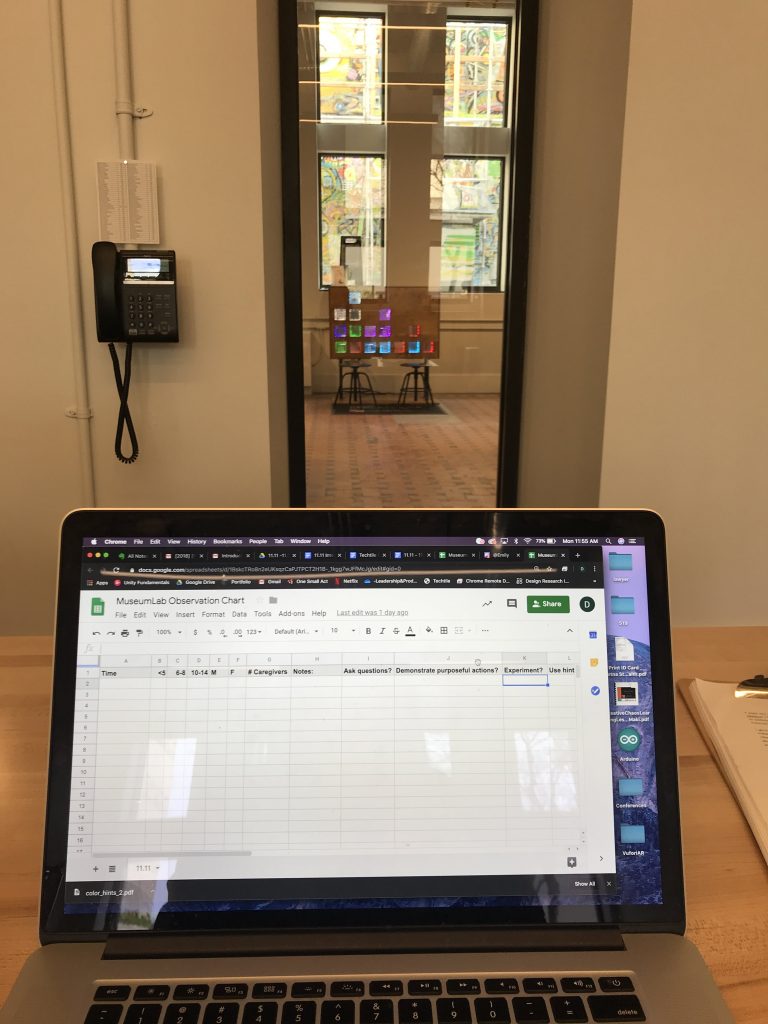
On Monday, it was a holiday, so school was out. There were much more patrons than we had seen in the space before, but still only about 50-60 children (plus their caregivers), who rolled into the Tech Lab over the course of the day. Of all those guests, only about three were in our demographic of 10-14. Of those three guests, only two guests engaged in our experience for 5-10 minutes. Most guests engaged for less than a minute, which is typical for a museum exhibit for the ages of 3-8.
Of all the experiences in the space, the VR Tilt Brush experience was the most popular, followed by the sound booth, and then the wooden tops. Especially on Monday, there was a line of guests waiting to play the VR experience. We spoke with the facilitators and they were really excited to see our installation in the space! They noted that while Pupil and Tilt Brush were the most popular among guests, they were also the most tiresome and tedious to facilitate. Not only were they potentially dangerous, but unsanitary, constantly breaking, and required a single facilitator to run each experience. They also noted that those experiences had very little educational value. Pupil was above the skill and understanding level of most of their patrons, and Tilt Brush did not have much a takeaway for students. They were excited to see that our installation did not require facilitation and also had a logic for guests to try to figure out.
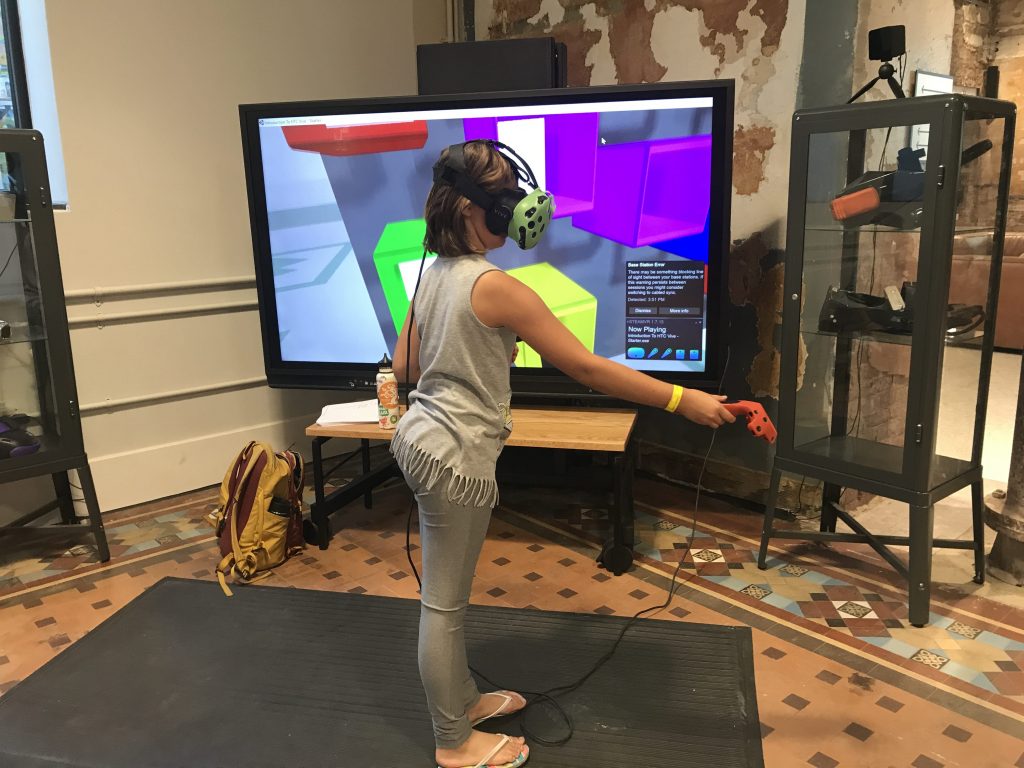
On Wednesday, we saw about 11 children (plus their caregivers), none of whom were in our age group. Most were under the age of 6, which made it difficult for them to play with our experience since we had not designed for smaller hands. In the afternoon, 10-11 students showed up for MuseumLab’s after school programming.
We noticed right away that these students weren’t very interested in any of the experiences in the MuseumLab. They sat in the revolving chairs in the Grable Gallery on their phones, or they fought over the Sound Booth in the Tech Lab. But even in the Sound Booth, students just sat on their phones and were using it for privacy. They were most excited when Kay brought out snacks!
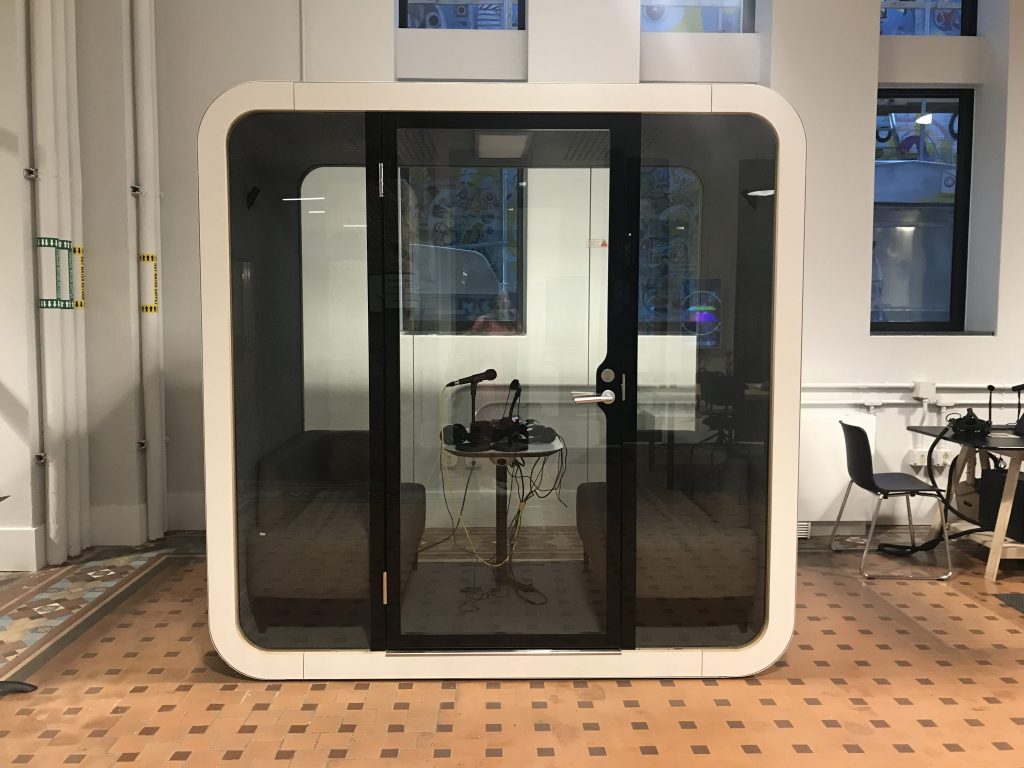
The popular sound booth! Guests can record themselves and pretend to be running a talk show. Mostly used by 10-14 year olds as a private place to play on their phones. 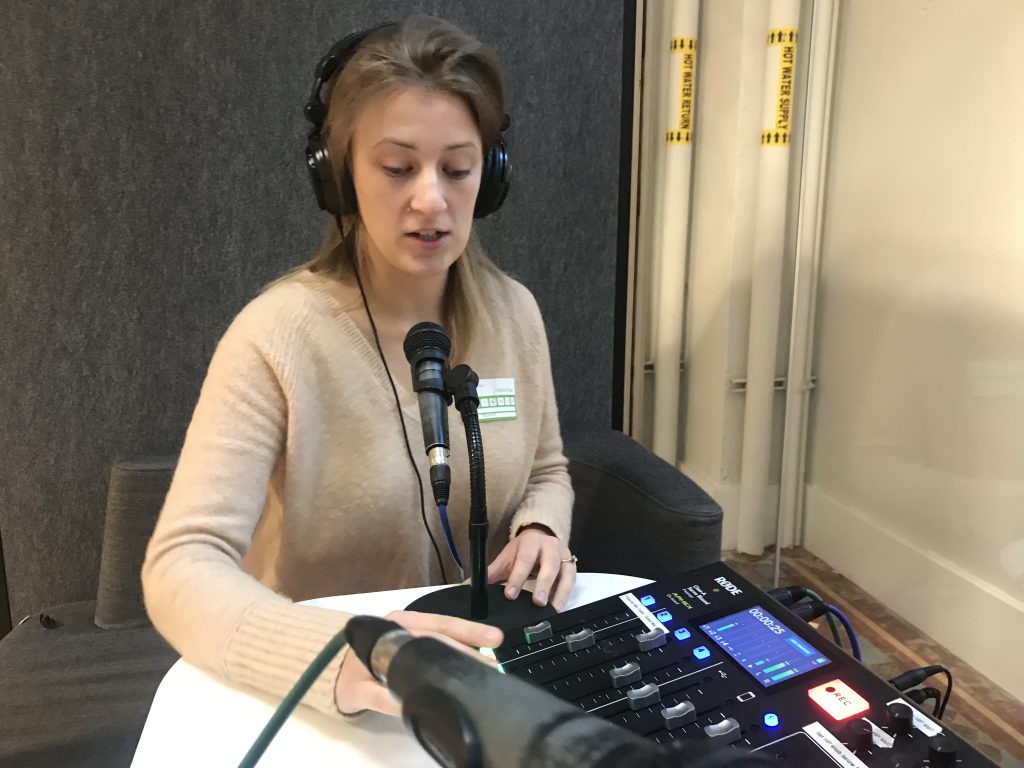
DJ Emily in the hiz house.
After speaking with the facilitators, we learned that there are about 18 students in after school programming, from surrounding Pittsburgh public schools (not all the students are from the upstairs middle school). They offer programming Monday through Friday, 3:30-6:30pm. Monday through Thursday, they have specific workshops, but on Friday there is free play. We noticed that while some students were engaging in the workshop, many were also sitting on their phones and computers doing their own thing. Facilitators noted that while they encourage the students to participate, they don’t force the students to do the workshops.
On Wednesday, the staff also laminated the hints that we provided and taped them to the top right corner of the installation. We did not ask them to do this, but it was greatly appreciated. We noticed that in the rest of the space, the other experiences had laminated and binder clipped instructions. We noticed that caregivers would often sit down in front of the installation and read all of the instructions before beginning, we also noticed that caregivers would read the instructions out to the children and try to explain it to them.
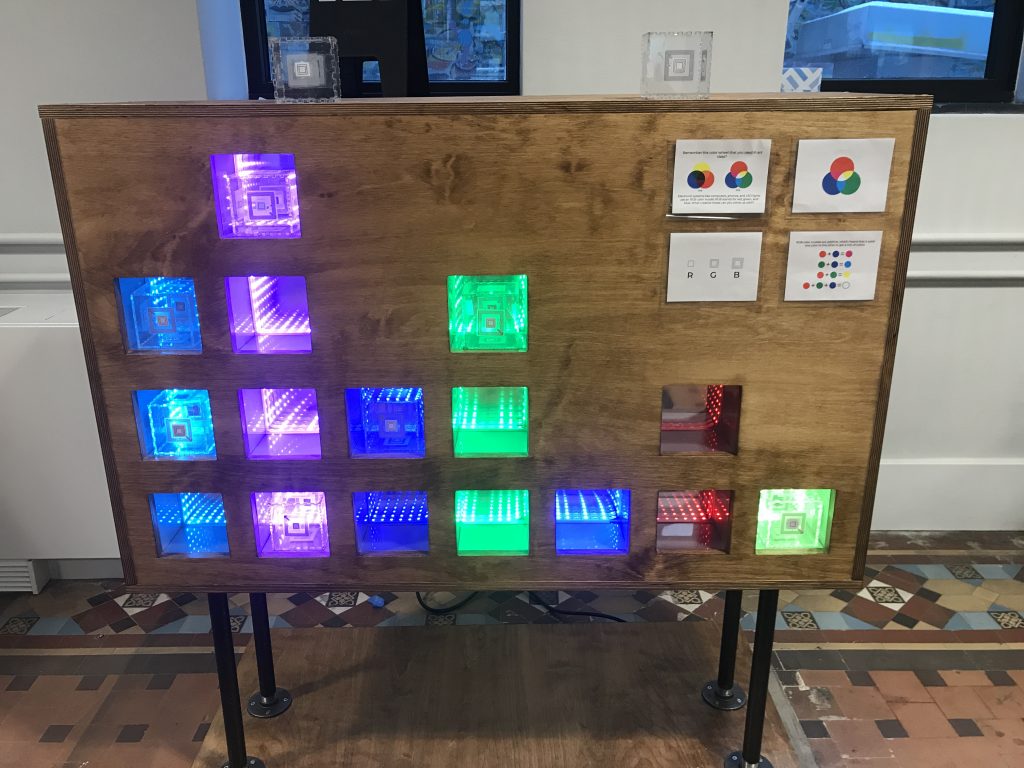
Over the course of the week, we noticed that while the MuseumLab is supposed to be for guests 10 and up, there were still mostly guests under the age of 8. We asked facilitators how they design programming for that. They noted that they constantly talk about this design problem and it’s currently something that they’re still trying to figure out (which made us feel a lot better that they’re also struggling with this). They design the programming for 10 and up, but often times they noted that it’s not age appropriate for most of the guests. However, they don’t want to lower the age-level of the activities because they’re worried that it will push away the 10 and up guests that they’re trying to attract. The end result of keeping the programming at that age level is that it’s often times not accessible for the current guests. However, they hope that this will change over time. Their argument is “if you build it, they will come!”
On Friday, we worked on changing the hidden interactions and feedback. We noticed on Monday and Wednesday, that guests were not drawn to our experience because it was being overshadowed by the VR experience and the Sound Booth. We spoke with Museum staff and they suggested adding in a “seed,” something that draws the eye to the experience. So when the installation hasn’t been interacted with for a while, a flickering or flashy state to attract guests much like a moth to light.
Wei added in a flickering resting state that occurs after X minutes when the system has not been interacted with. The flickering only occurs in the cubbies that have blocks in them to hopefully attract guests to pick up the block. When a block is removed, the system stops flickering and the cubby settles on either red, green, blue, or white. We decided on this because we noticed that when the cubby is already mixed, it becomes confusing for new guests to understand how the system works. By restarting all the cubbies to a single unmixed state, it clears the slate and hopefully makes the experience easier to understand.
We also noticed that the hidden interaction was too hidden. Previously, we had made it so that when the column is synced, a runner travels through all of the columns. On Monday, the synced column would black out and then the runner effect would appear. This effect while instantly noticeable, also made it look like the guest broke the experience. So we changed it to a runner that would occur among a dimly lit column. While this effect did not make the cubbies look broken, it did not stand out as much. By Friday, we noticed that no one was noticing or finding the hidden interactions, so Wei worked on changing the hidden interactions. Instead of the hidden interaction continuously occurring once achieved, it only will appear once, serving as an immediate reward.
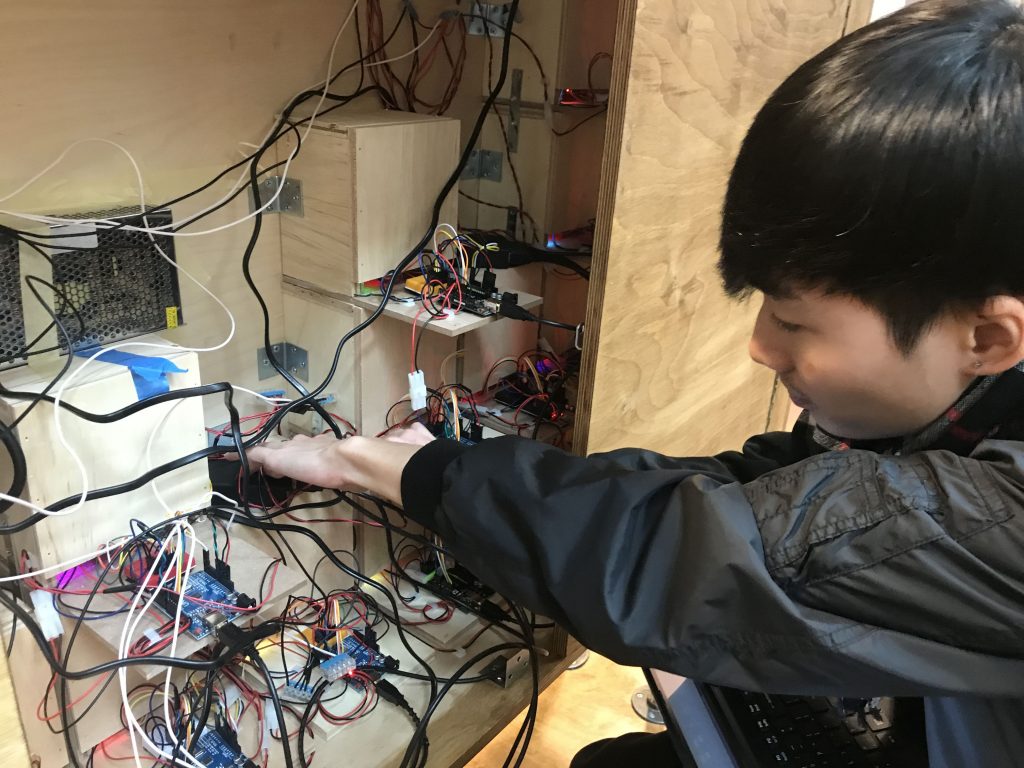
On Friday, during observation time there were only about 10-11 children (not including their caregivers), and none in our demographic. About 7 children interacted with the experience.
On Saturday, there was the biggest turnout of the whole week. Almost as many children as we saw all week.
Meanwhile, back at the ETC, Marissa worked on fabricating blocks. Last week, we had discussed moving forward with the acrylic blocks while testing out polycarbonate blocks. This was by the recommendation of Steve Audia and David Purta. However, while we were at the museum, we noticed that from afar, the acrylic blocks were difficult to see. This made it so that guests were not drawn to the experience since they didn’t know how it could be interacted with.
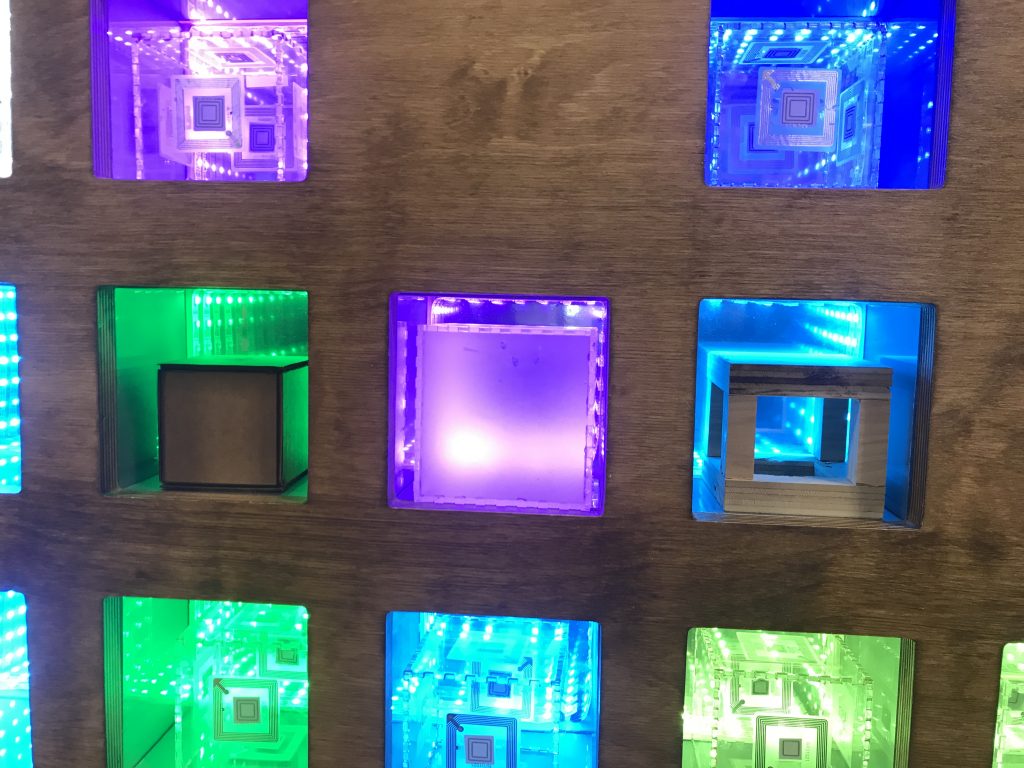
We ran into Amanda Tinker at the museum, and she suggested simple wooden blocks with the NFC stickers on them. This would make the experience more playable since wooden blocks were a classic toy. She was also concerned about the robustness of the acrylic blocks if they were dropped.
So we did a drop test! We dropped an acrylic block on a hard floor and on a carpeted floor and noticed that it chipped right away (and shattered when thrown!). From that test, we decided that we definitely could not move forward with the acrylic block.
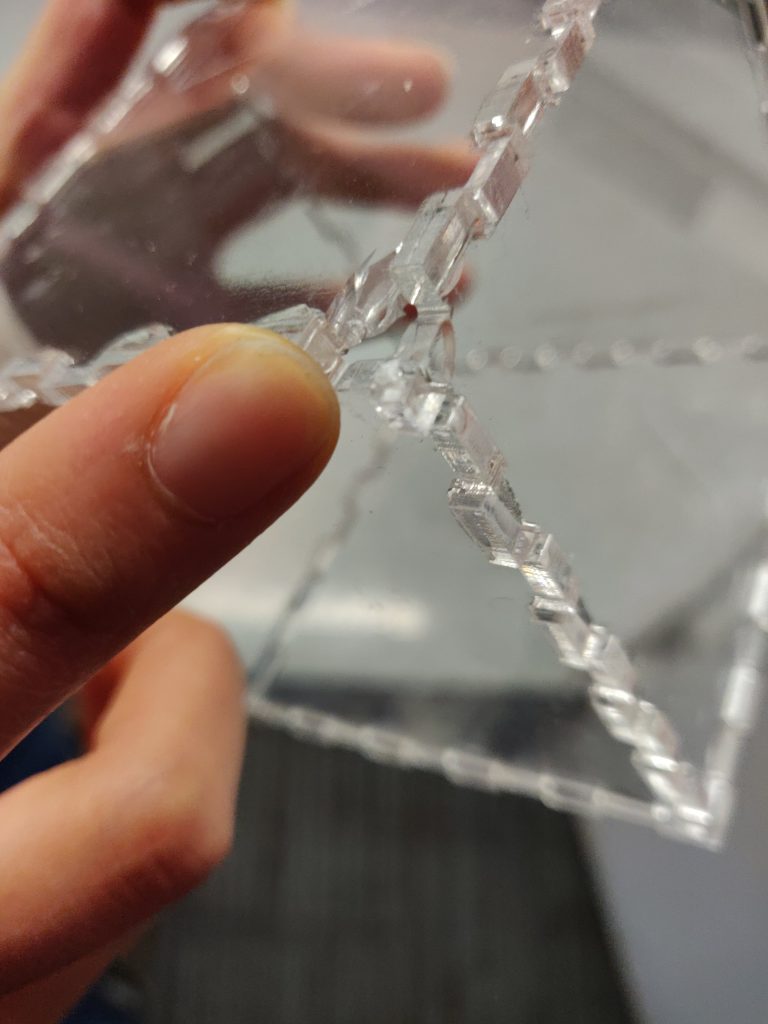
We 3D printed a jig to use to glue the polycarbonate blocks, and we assembled a polycarbonate block. We threw this on the ground and it was much more robust. It took a few heavy handed throws to the ground to break it, and it only broke among the seams.
Marissa also assembled and sanded a wooden block with our laminated plywood, and this was the most attractive option. Given that it was a little heavy, she hollowed out the inside and made a much lighter block that felt playable.
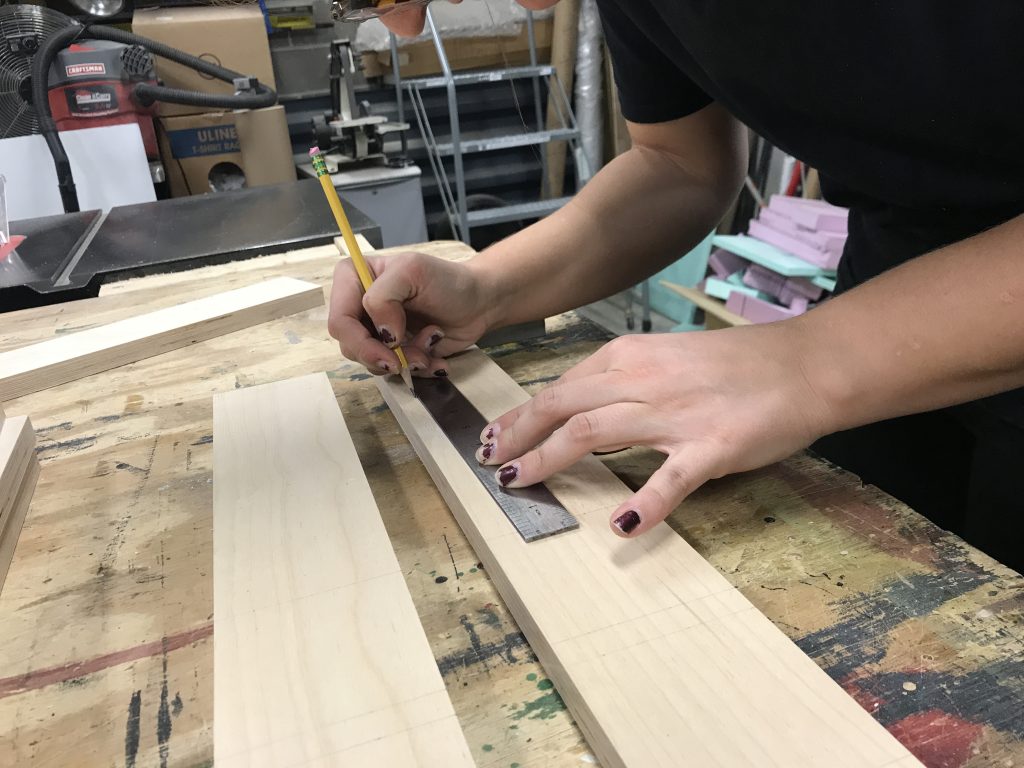
We made an executive decision to move forward with the hollow wooden block option as this was the most cost-effective, safe, and replicable option. We will create a new block set before the STEAM Carnival next Friday.
Next Steps:
- Continue playtesting at the MuseumLab
- Continue to iterate on the hidden interactions and feedback
- Fabricate the final blocks
- Start technical documentation
- Trailer!
